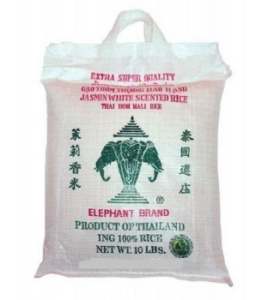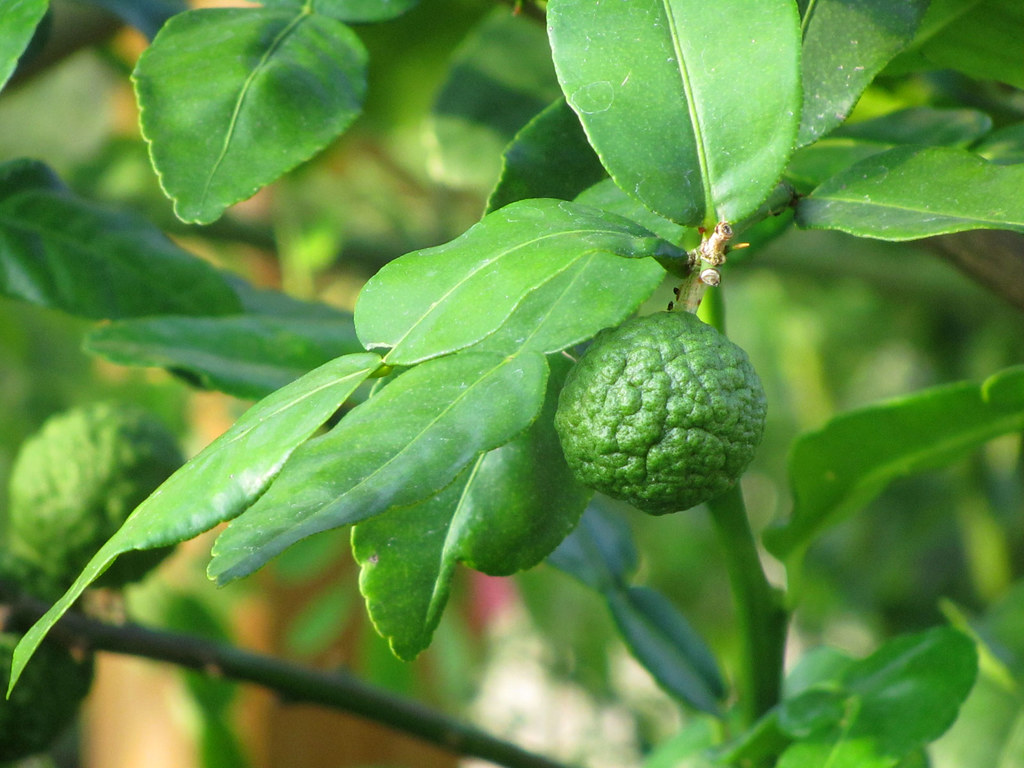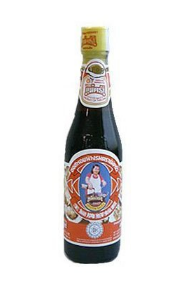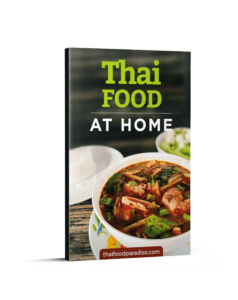Essential Thai Ingredients: What You Need To Cook Authentic Thai Food
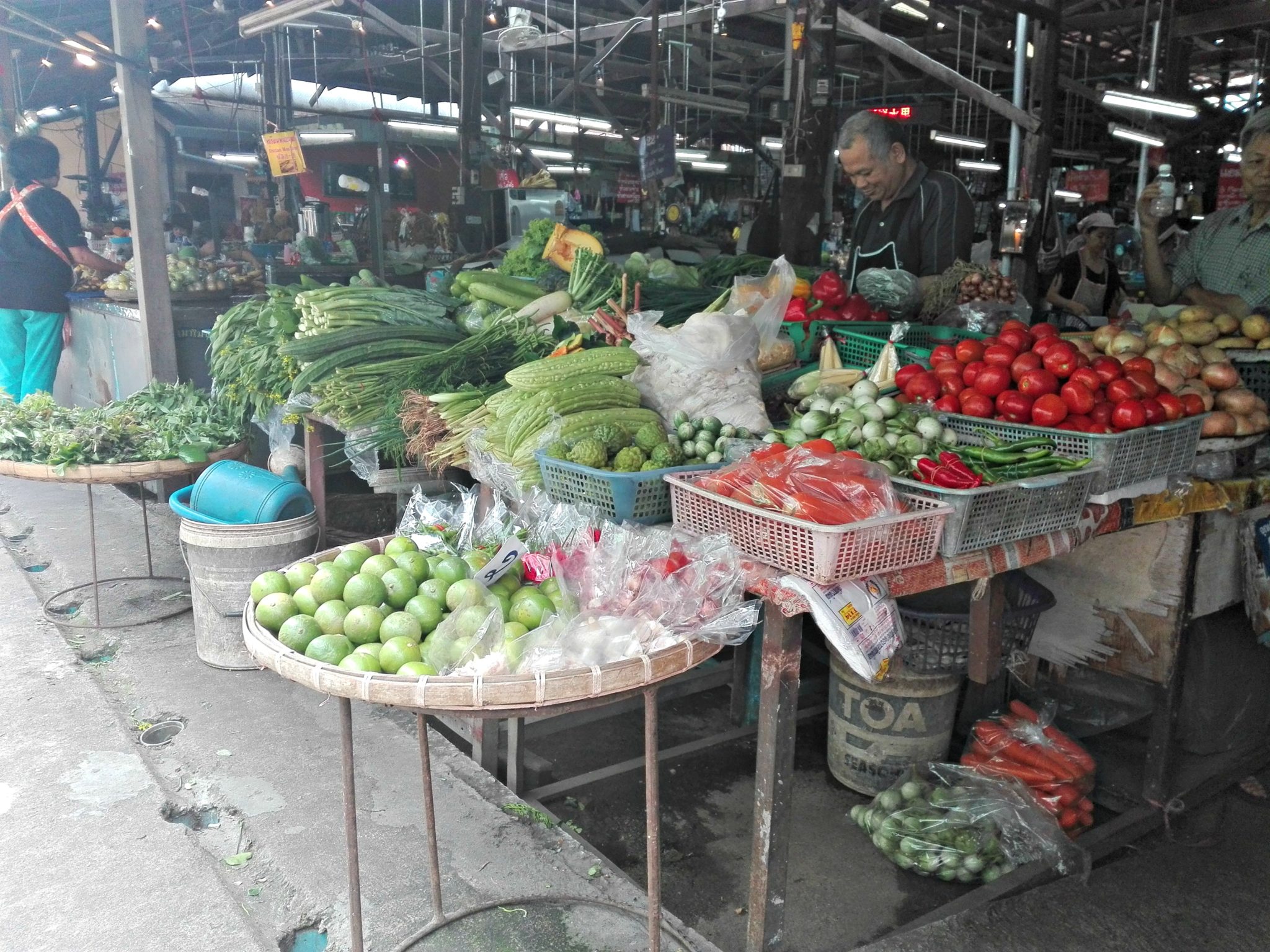
It’s always helpful to become familiar with the most common ingredients used in any cuisine. Thai cuisine uses a remarkable range of ingredients, many of which are inaccessible to people living in Western countries. But that doesn’t mean you can’t cook authentic Thai food: it just means that you can’t cook some of the more obscure dishes. The following blog post highlights some of the essential Thai ingredients you need in your kitchen if you want to cook delicious Thai food that tastes like what you’d eat in Thailand.
Some of the products here are affiliate links, meaning I get a small percentage of any purchases made on Amazon with these links. Any small fees I make from affiliate links go into running this blog, and buying through an affiliate link does not affect the price you pay, so I appreciate your support.
Jasmine Rice
Rice is such a staple of Thai food to the point that asking a Thai person if they are hungry in Thai “gin khao reu yang?” literally translates as “have you eaten rice yet?” Thais just cannot get enough rice, and the particular type of rice they use most frequently is jasmine rice, which is much more fragrant, nutty, and a bit stickier than the long-grain rice us Westerners are used to.
Making rice is a fine art to which Thais pay serious attention to. That’s why I recommend buying only rice made in Thailand if you can. It might sound like a purist approach to Thai cooking, but good Thai jasmine rice is one of the essential Thai ingredients. Jasmine rice should be eaten alongside the main dish with each mouthful instead of smothering it in sauce and losing its texture.
Personally, I recommend Elephant Brand Jasmine Rice, which you can buy a 10-pound bag of on Amazon here. You also get 5 pairs of chopsticks with each bag of rice, which is pretty cool.
Sticky Rice
If you have any desire to cook the food of either northern Thailand or Isaan, or even just want to enjoy an authentic papaya salad, you need to get your hands on some sticky rice. Otherwise known as glutinous rice, Thais steam this rice and serve it with a dazzling array of chili dips and salads.
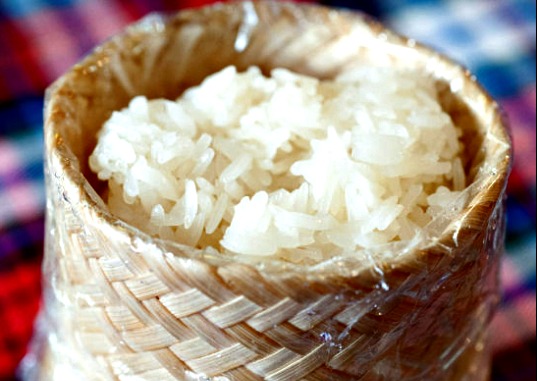
You can get a 10-pound bag of sticky rice from Amazon for pretty cheap, and it’s made in Thailand too so it’s the real deal.Check that out here if you want to buy your sticky rice online. Otherwise, any good local Asian store should stock sticky rice. Look for products specifically made in Thailand.
Thai sticky rice is not the most straightforward of things to cook perfectly, but this cool little Thai sticky rice steamer has served me extremely well over the years. It cooks perfect sticky rice every time and the instructions are easy to follow for beginners. After a while, you’ll get the hang of cooking perfect sticky rice on your own.
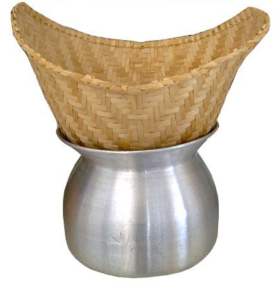
Chilis
No list of essential Thai ingredients would be complete without the addition of chilis. Authentic Thai food should be at least medium spicy, ideally highly spiced. If you don’t like spicy food, it’s ok to tone each dish down, but I would never recommend avoiding spicy food altogether.
The Thais absolutely love their chilis, and they’ll often eat them in large chunks. The main chilis you need are bird’s eye chilis, which are small fresh chilis with a lot of heat, dried Thai chilis, which should be available in any Asian market, and chili powder. All these types of chili can easily be found either in your local supermarket or in any Asian market.
Coriander/Cilantro
The name you use for this herb depends on where you hail from. Coriander is a non-negotiable component of Thai cooking. It is used in everything from soups to curries to stir-fries.
People seem to be averse to using the stems of coriander, which baffles me because they are really fragrant and add a wonderful taste to every dish. Any recipe calling for cilantro should include both leaves and stems. You can find fresh coriander in any good supermarket.
Fish Sauce (Nam Pla)
Fish sauce, or nam pla, is to Thai cuisine what salt is to many Western cuisines. It provides a basic level of seasoning that enhances and brings out the flavor of many dishes. In Thailand, you will rarely ever see a restaurant that doesn’t serve a bottle of fish sauce on each table for diners to customize and season their food with. Furthermore, fish sauce is an important ingredient used at the beginning of recipes.
I personally use Red Boat Premium fish sauce because it tastes awesome and it doesn’t contain any MSG or other additives. The extra flavor you get from Red Boat makes it worth the investment. If you’d rather stick to your local Asian market or supermarket, look out for the Squid brand.
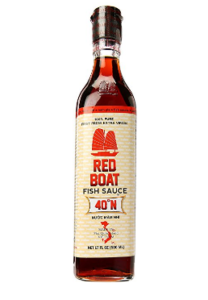
Galangal
Galangal, or kha in Thai, is an essential Thai ingredient that you need if you want to cook authentic Thai food. Galangal is not too difficult to find, and most Asian stores and larger supermarkets will stock it. Galangal is similar to ginger in appearance, but it has markedly a less spicy more citrusy flavor with a piney, woody aroma. You cannot interchange galangal and ginger: the two are completely different ingredients used for entirely different reasons in Thai cooking.
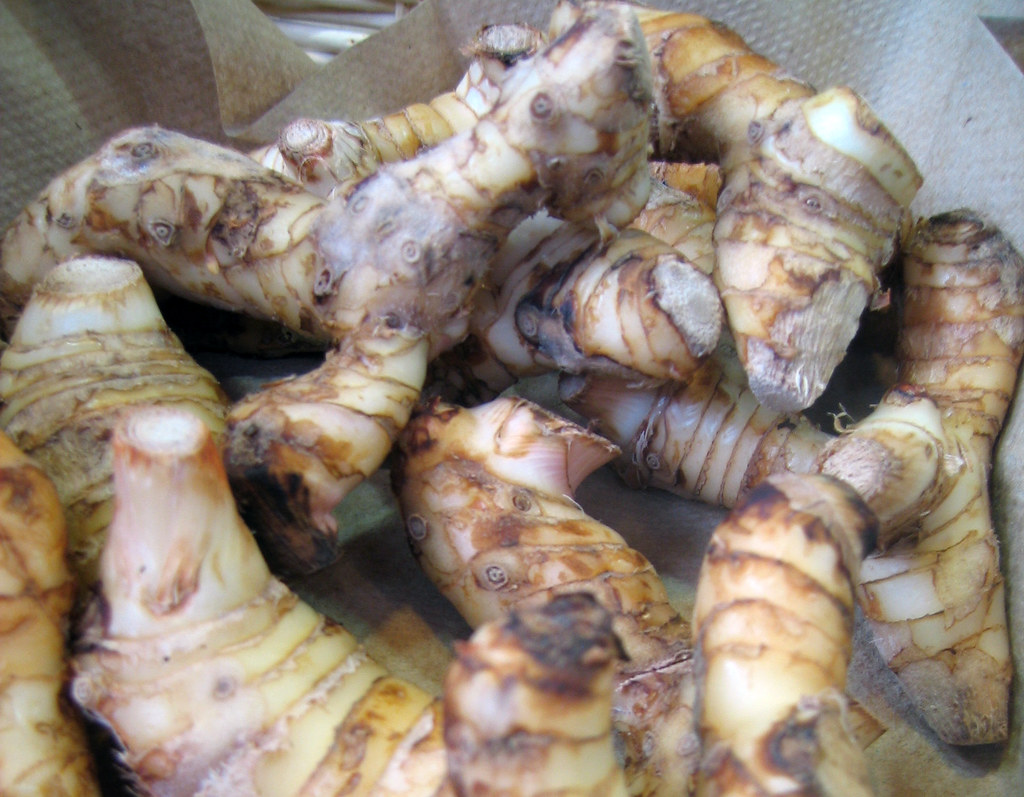
Garlic
Garlic is used extensively in Thai cooking. Thai garlic is different than what you are used to in that the cloves are about half the size of standard garlic. The taste is slightly better on Thai garlic but not to the detriment of having to avoid normal garlic to cook Thai food.
Most stir-fried dishes in Thai cuisine begin by beating some garlic in a pestle and mortar. Many curry pastes also begin with garlic. In summary, garlic is damn important. Luckily, it’s also easy to find.
Kaffir Lime Leaves
Used to add an addictive sourness to many Thai soups, kaffir lime leaves are an essential Thai ingredient. It is vitally important that you don’t make the mistake of using dried kaffir lime leaves. These leaves almost never contain anything remotely close to the amount of flavor you get from fresh leaves or frozen ones.
My advice is to search Asian markets, which often sell frozen kaffir lime leaves. Fresh ones are harder to find but you can look out for them too. Just never go near the dried leaves, they are not worth it.
Image via Flickr by treegrow.
Lemongrass
Another key Thai ingredient, lemongrass is pretty inedible on its own because of the toughness of it, but to miss out on lemongrass is to lose lots of flavor in several curries and soups central to Thai cuisine. Lemongrass is one of the main ingredients in Tom Yum and many other famous dishes.
When using lemongrass, always peel away the tougher outer leaves. Cut about an inch from the root and about 4 inches from the top so you are left with a roughly five-inch length piece of lovely fresh lemongrass stalk. Lemongrass lasts about a week in the fridge but it’s best used within the first two to three days of buying it.
Fermented Fish Sauce
Since pla ra, or fermented fish paste is almost unheard of outside Thailand, you can make do with fermented fish sauce, or nam pla ra, to cook authentic Isaan food. The food from Isaan is some of the funkiest, most delicious you’ll eat, with strong flavors influenced very much by pla ra.
You can find fermented fish sauce in any good Asian store. Look out for the Pantainorasingh brand, which is a Thai company so you know it’s authentic.
Limes
Thai cuisine makes generous use of limes, which makes them definitely one of the essential Thai ingredients. Thai limes are less bitter and are more fragrant than those found in most Western countries, which can make replicating their exact flavor a bit of a challenge. Limes are used in an almost endless list of famous Thai dishes, from Tom Yum Goong to Laab to Som Tam.

Your best bet is to look for a store selling key limes, which are the closest approximations to the limes found in Thailand. Barring that, you can use standard limes, but the taste won’t exactly replicate most Thai dishes (it’ll still be good, though).
Palm Sugar
I’ve gone through several ingredients that add to the sour, spicy, and salty dimensions of Thai cooking, but you need to remember the sweet. Palm sugar is preferred over other forms of sugar because it’s what the Thais use. When I’m cooking with Thai food I prefer to softer palm sugar because the hard form is a real pain to use.
Palm sugar should be a staple of your pantry for cooking Thai food. You can get a pound of the stuff for very cheap on Amazon here, great value considering that this jar will likely last you a year or more.
As you can see from the writing, it’s a product of Thailand, so it’s the real deal.
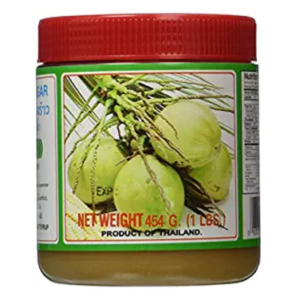
Basil
Thais use several types of basil in their cooking, although the most accessible in Western countries are sweet basil and krapow, or holy basil. The latter type of basil, holy basil, is used to make a Thai street food classic, Pad Krapow, which you can find a recipe for here. Thais also use holy basil to create the wonderful stir-fried dish that is Pad Kee Mao, or drunken noodles. When a recipe calls for holy basil, never replace it with sweet basil like many Thai restaurants are fond of doing; it’s just not the same.
Sweet basil is used to add a wonderful licorice or anise like taste to a range of noodle soups, curries, and more. The Thais often serve three or four sticks of these basil leaves to diners who then season the dish with the leaves by rustically tearing them off themselves and adding them to their noodle soups. The magnificent Thai dish of hoy pad nam prik pow, or clams stir-fried with chili paste, uses lots of sweet basil to give the sauce an amazingly strong fragrance and taste.
Oyster Sauce
An important ingredient in many Thai dishes, oyster sauce is an essential Thai ingredient for several stir-fried dishes including the famous pad pak boong, or stir-fried morning glory. Again, there are many different brands of oyster sauce, and you need to choose carefully. It might sound fussy, but your choice of oyster sauce significantly affects the taste of the dishes you use it in.
By far the best oyster sauce for Thai cooking is the Maekrua brand, which is made in Thailand is much less saltier than other common oyster sauces. You can get Thai Maekrua oyster sauce from Amazon at a decent price here. If you’d prefer to buy it in a store, good Asian markets should stock this brand of oyster sauce.
Well, that rounds up this rather extensive list of essential Thai ingredients. To build up a Thai pantry, focus on the ingredients that don’t deteriorate or go off quickly, such as oyster sauce, fish sauce, jasmine rice, and sticky rice. Freeze your lime leaves when you’re finished with them, and buy the remaining ingredients from this guide fresh if you can.
I don’t know about you, but I’ve worked up an appetite just from writing all this out! I’m now going to cook myself a Thai feast, and I hope you will too!
Enjoy this post? Please consider subscribing to my email list via the form below, and I’ll send you updates in addition to free exclusive Thai food recipes that won’t be published on my website. Thank you!
[contact-form-7 id=”292″ title=”Contact form 1″]
[wp_ad_camp_2]
I lived in Thailand for a few years during my 20s during which time I fell in love with Thai food. Along with my Thai partner, I cook and eat tasty Thai dishes 3 or 4 times per week. I’m here to bring you recipes, Thai food tips, and suggested cookware for making Thai food.
